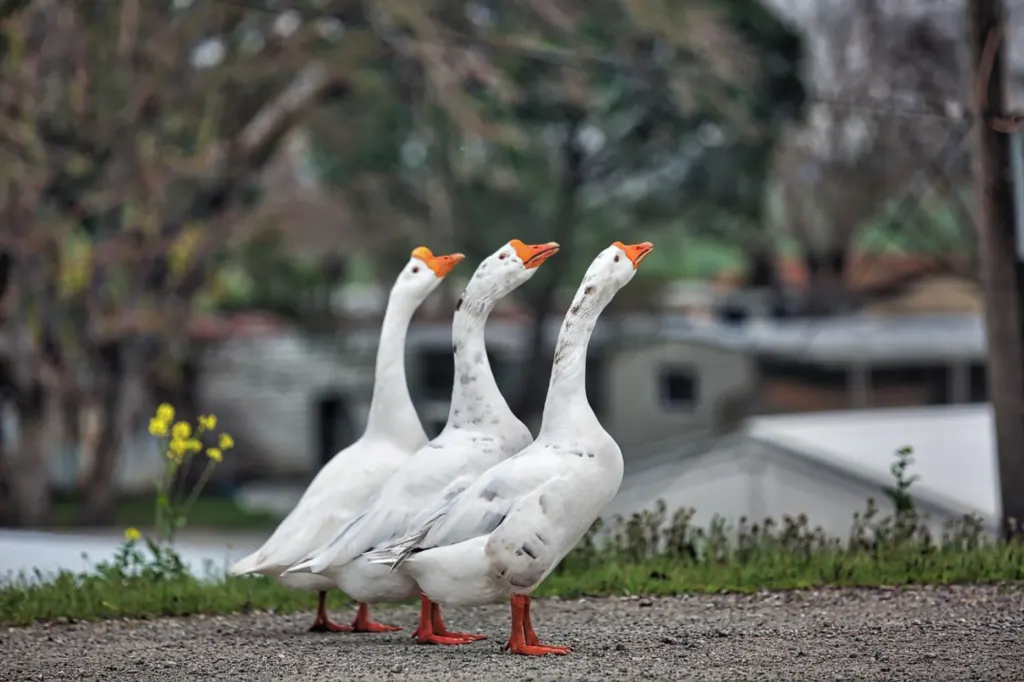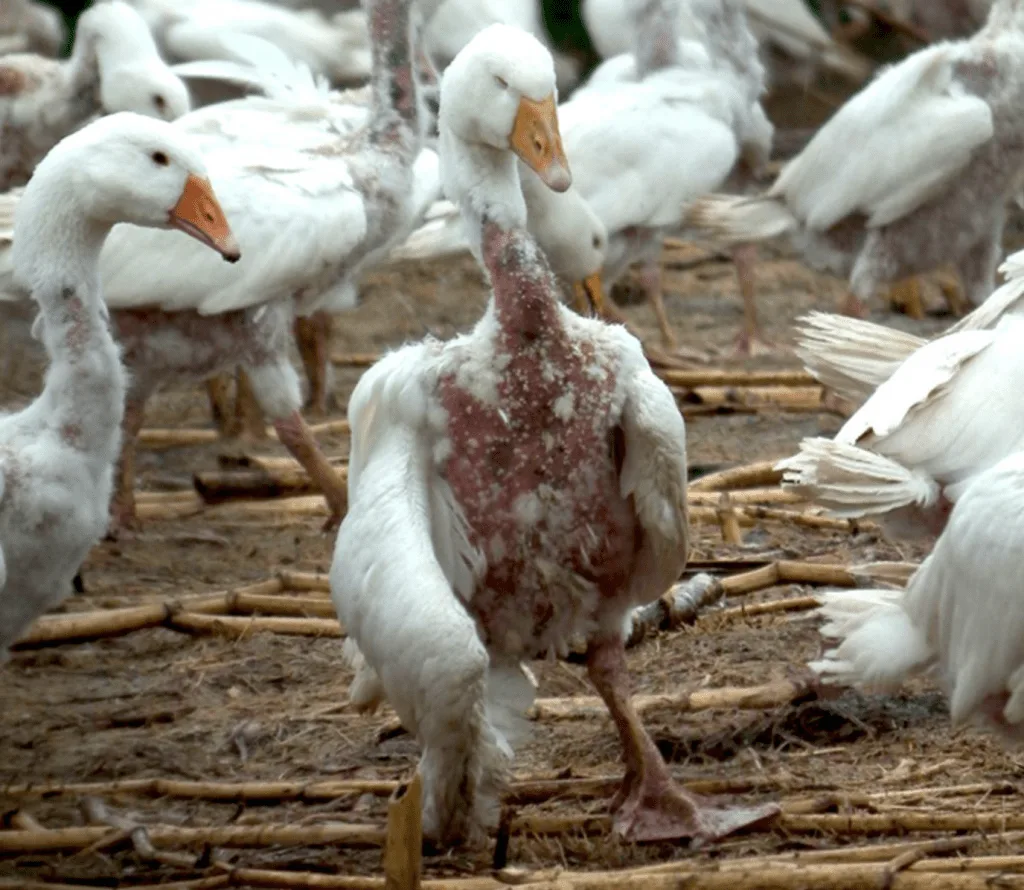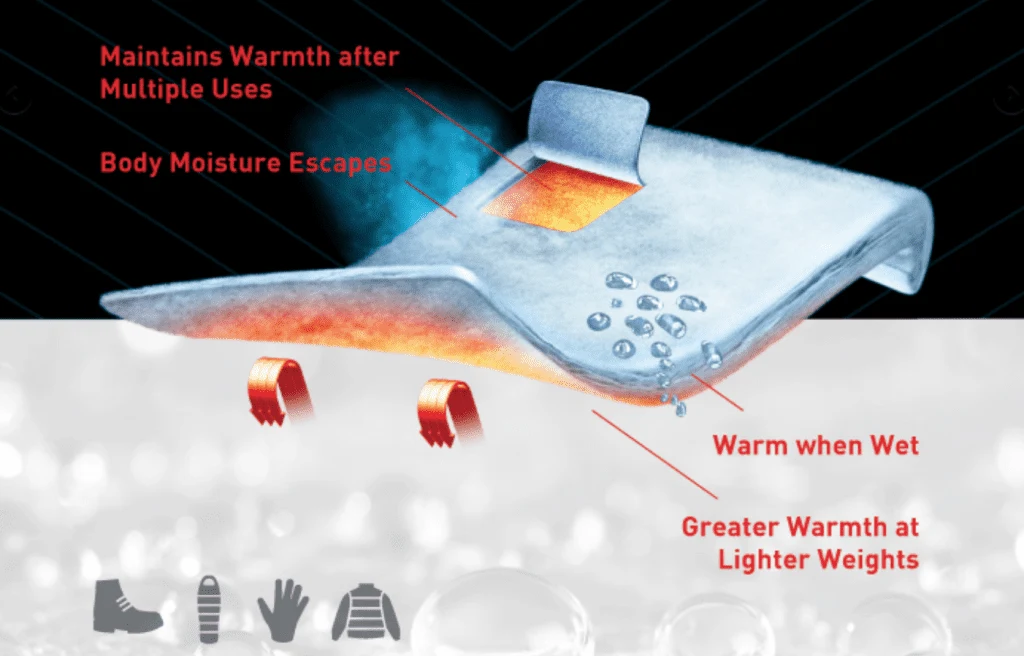Up to 50% Clearance Clothing & Footwear + Extra 25% Off REI Outlet.

Down. It’s everywhere in the outdoor world: in sleeping bags, coats, even those weird puffy booties that are supposed to keep your tootsies all warm and toasty inside your tent. And in case you weren’t aware, down is the light, fluffy layer of insulation under a bird’s feathers. It’s usually harvested from ducks and geese for use in winter wear and outdoor gear (also pillows and comforters). It’s warm, it’s light, and it’s packable, so why shouldn’t you use down? Let us enlighten you on the practical and ethical reasons to say no to down.
Practical Reasons to Say No to Down
- Down is useless when wet. You may make the excuse that you don’t camp in wet conditions or you don’t hike on trails with potential river crossings, but the truth is that sometimes surprise rainstorms occur, your pack falls in a stream or puddle, or your hydration pack springs a leak all over your gear. Guess what? You’re gonna freeze to death ’cause that down jacket or sleeping bag (or weird booties) that weren’t supposed to get wet are now soaked and have zero insulating properties whatsoever. That goes for down treated to be water-resistant, too; it can still only handle a few minutes of a light drizzle. You might as well have packed a cotton button-up. Synthetic down alternatives, on the other hand, still keep you warm when wet.
- Down doesn’t insulate from below as well. If you’re sitting or laying on down (say in a sleeping bag), whatever areas are being compressed by your body aren’t insulating you from what’s below. This is frequently an argument for why to switch to backpacking quilts, but you’re still dealing with the same issue: your butt’s cold. Synthetic insulation isn’t as guilty of causing cold butt syndrome. So if you need warmth in 360º, ditch the down.
- It’s hard to clean. Down purportedly has a longer life-span than synthetic insulation, but that’s only if you take care of it, which means frequent and specialty cleanings. Specific (and expensive) down-cleaners are required to wash your bag (which many say should be done after every few uses). On the flip side, you can just toss a bag with synthetic insulation in the washer with any ol’ detergent and then transfer to the dryer. Too easy.
- It’s more expensive. Compared to synthetic insulation, down, especially the higher fill-power stuff, is more expensive. So if you’re on a budget, down isn’t the way to go.

Ethical Reasons to Say No to Down
- Geese are plucked alive in order to harvest their down. So if you were thinking of some idyllic countryside where geese just shed their feathers and some tractor collects them all for your gear, you’d be wrong. On the contrary, feathers are ripped out, which causes pain, blood, and torn flesh. And this happens to every bird about 3-4 times a year. Animals are bred and abused so we can have lighter, smaller gear, and that’s not cool. Not cool at all.
- It takes 75+ birds to fill a comforter. Which is probably about the same as a sleeping bag. A jacket might require fewer, but that’s still a lot of mutilated birds.
- There’s no such thing as “cruelty-free.” Down is produced by removing feathers from a bird. And while the industry would like you to believe that “ethical down” exists, the truth is that the down industry is an ugly, cruel one. Even if manufacturers boast certifications that say they procure down from sources that don’t use live-plucking or force-feeding, down is still a by-product of the meat industry where animals are bred, abused, mutilated and slaughtered (sometimes by being boiled alive because of ineffective stunning and head-chopping). Also, the definition of “responsible down” is that birds weren’t live-plucked. So if they weren’t alive… Doesn’t sound very ethical to us.
- Some companies will say that their down sources use “gathering” instead of live-plucking. You may see the term in regards to how down was collected, specifically related to “cruelty-free” or “ethically sourced” down. But this isn’t farmers picking up molted fluff from around the pond, it’s harvesting the down when it’s–supposedly–ready to molt, meaning it’s about to fall out anyway. But the process still involves the forcible removal of down from geese and ducks and still involves ripping out feathers and causing pain. Official documents even say that’s still an acceptable outcome.
But down is lighter and packs smaller, you say. So you have to carry a sleeping bag that weighs a few extra ounces and is a few inches longer packed down. Big deal. Even ultralight backpackers have to make choices and trade-offs. Personally, I’ll choose to carry a little extra weight over supporting this violent industry any day.

Say No to Down Because There are Better Options
Maybe the most practical and ethical reason why you shouldn’t use down is that the technologically advanced options hitting the market these days are spectacular. Some even claim their products outperform down in every way imaginable!
Polartec’s PowerFill uses 100% recycled plastic to make their hollow fibers. Primaloft has made the first synthetic, biodegradable insulation in the world. And Climashield claims to make the most durable insulation on the market. And these technologies go into jackets, sleeping bags and more. I mean, check out this Patagonia NanoPuff jacket made with Primaloft or this Eddie Bauer Igniter 0º sleeping bag made with Climashield.
And because synthetic down alternatives are getting more advanced by the day, I’ve no doubt that they will surpass down in every way very soon. Which means we all win: we and the animals.
The bottom line is that down, like wool, is a for-profit industry, and even if the animals don’t have to die (right away) like cows for leather or reptiles for skins, animals will always be mistreated and abused so the most money can be made in the least amount of time with the least amount of effort.
I’m gonna put this video down here for the curious, but be warned: anyone with an ounce of compassion is gonna have a rough time finishing it.
Want some ideas for synthetically-insulated outdoor gear that doesn’t contain down? Check out our lists of synthetic sleeping bags, sustainable coats and jackets, packable puffer jackets here.
•
*This post contains affiliate links, which means when you make a purchase we may receive a small percentage of the sale. Like, enough to maybe buy a new pair of synthetic insulation mittens.
Alisha is a freelance outdoor journalist and photographer based in Ogden, UT. She loves backpacking, hiking, mountain biking, kayaking and snowboarding (even though she’s terrible at it). She’s also pretty sure she’s addicted to coffee. alishamcdarris.com
